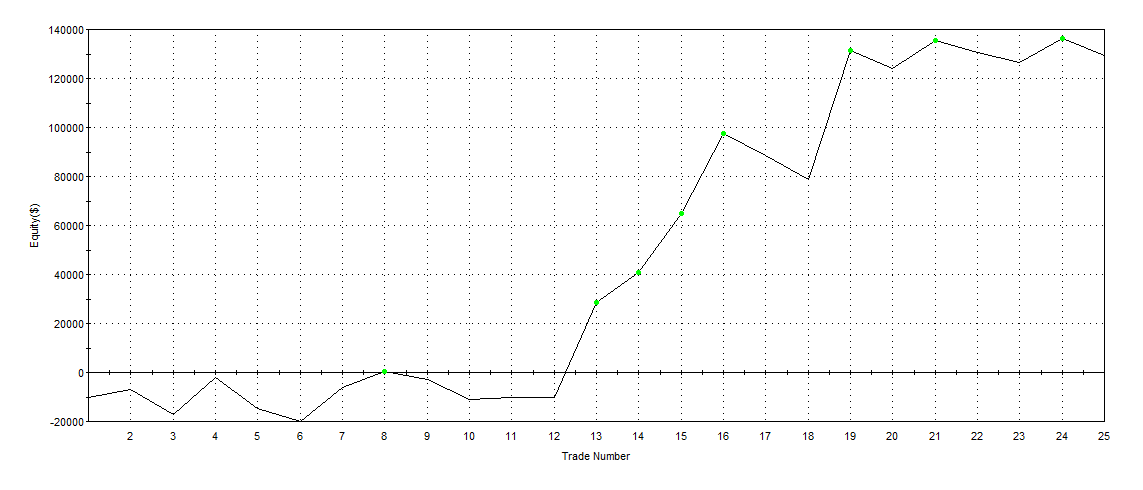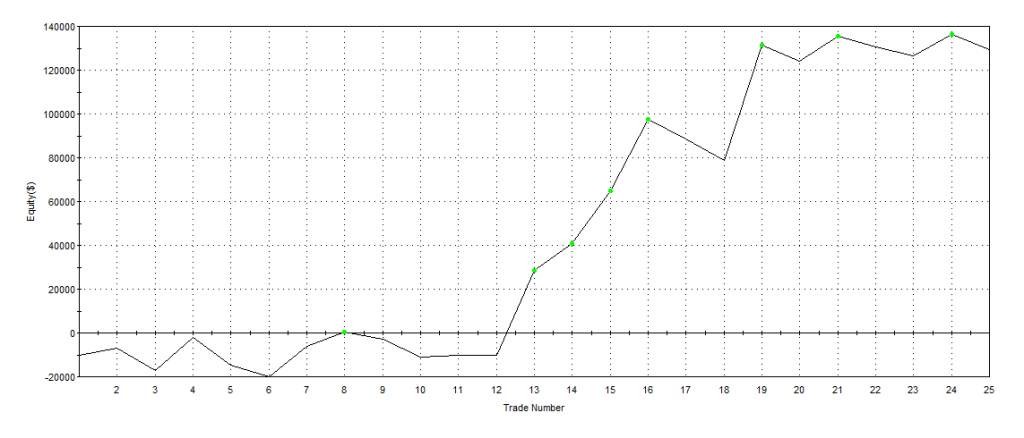Number six in our seven steps is Duration.
Duration represents the expected length of time in winning trades, losing trades, and all trades. Almost without exception we find that trend- and momentum-oriented signals have a shorter duration for losing signals and a longer duration for winning signals. The reverse is true for mean-reversion trades.
Knowing your expected duration is important so that you can mentally and psychologically prepare for what will take place in your system. If you constantly want to lock in gains on trend signals, then you may very well miss the big winning trades that provide the positive expectancy in your system.
When the market is chopping around, you may get irritated by the number of losing trades that pile up in a short period of time. But if they are small and in line with historic results, then turning off the system may set you up to miss the trade that catches the next trend.
The following is a simulated trend-strategy performance report. Trades one through twelve were essentially sideways, followed by four winning trades. What this report doesn’t show us is the duration of each trade. The report simply adds the winners and subtracts the losers without accounting for time.
The average winning trade in this example was 241 days. And the average losing trade was 57 days. With 52% accuracy, that means you are spending far more time in winning trades than losing trades, even though this chart makes it appear that you spend about half of the time in losing trades.
Next time we will discuss the final step in systems success: Accuracy.
Andrew Falde
No relevant positions


